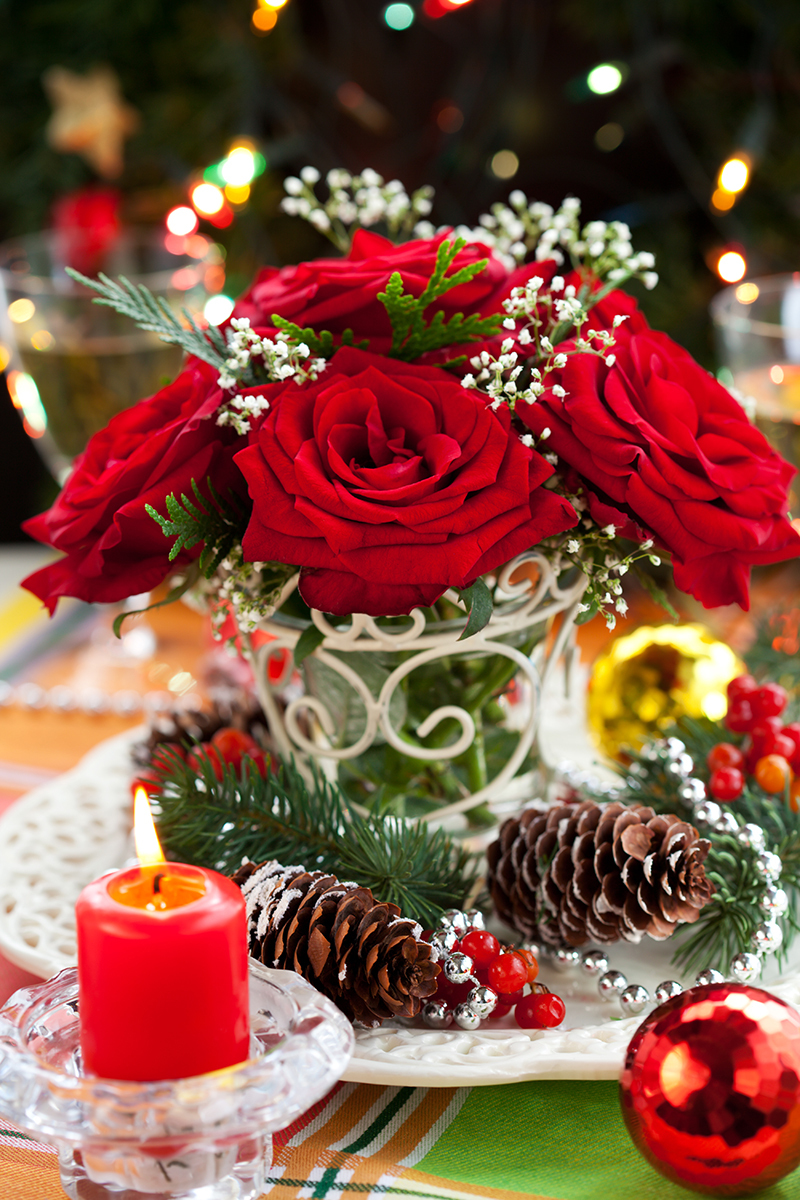Transform Your Poinsettia Care Routine for Better Results
Posted on 17/08/2025
Transform Your Poinsettia Care Routine for Better Results
The poinsettia (Euphorbia pulcherrima) has become synonymous with the holiday season, brightening homes and celebrations with its iconic red, white, and pink bracts. However, many find their poinsettia care routines lacking, leading to droopy leaves and discarded plants after the New Year. What if you could transform your poinsettia care routine and enjoy vibrant, healthy poinsettias well beyond the holidays?
This comprehensive guide will help you reimagine your poinsettia care practices from purchasing the healthiest plant to maintaining robust growth all season and even reblooming next year. Discover the latest insights and proven care tips that will improve your poinsettia care results--making your festive displays truly unforgettable.
Why Your Poinsettia Care Needs an Upgrade
Most people treat poinsettias as temporary decorations, but this short-term approach often leads to disappointing results. Understanding the plant's needs and adapting your care routine will help your poinsettia thrive, adding beauty to your home long after the holiday season is over.
- Extend plant longevity with proper care methods.
- Keep leaves and bracts vibrant--avoid the "wilting after Christmas" scenario.
- Reuse poinsettias year after year by encouraging reblooming.
Ready for a transformation? Let's dive in!

Step 1: Selecting Quality Poinsettias
Choose the Healthiest Plant
The foundation of successful poinsettia plant care begins at the store. To maximize longevity, select a plant that already exhibits signs of health and vitality.
- Check the soil: It should be moist but not soggy or dry.
- Examine leaves and bracts: They should be lush, vibrant, and free of yellowing, brown spots, or wilting.
- Inspect stems: Thick, firm stems indicate a robust plant.
- Avoid plants displayed in drafty or cold areas, as these are already stressed.
Handle with Care
When transporting your poinsettia home, protect it from cold temperatures. Wrap the plant in paper or plastic, and never leave it in a cold car, as even a brief chill can cause irreversible damage.
Step 2: Setting Up the Perfect Poinsettia Environment
The Ideal Location
To improve your poinsettia care routine, carefully choose your plant's location:
- Bright, indirect sunlight: Poinsettias love light but can wilt or burn in direct midday sun. Place them near an east- or west-facing window.
- Stable temperatures: Keep them in rooms with 65-75?F (18-24?C) by day, no cooler than 55?F (13?C) at night.
- Away from drafts: Avoid spots near exterior doors, fireplaces, or heating/cooling vents.
Humidity Matters
Poinsettias hail from humid Central American climates. Dry indoor air, common during winter, can stress the plant.
- Place your plant on a tray filled with pebbles and water, ensuring the pot sits above the waterline for increased ambient humidity.
- Mist leaves occasionally if the air is very dry, but avoid soaking the bracts or flowers.
Step 3: Watering Wisely for Optimum Health
Overwatering is the most common reason for poor poinsettia care outcomes. To ensure success, understand your plant's needs:
- Check soil moisture regularly: Only water when the top inch of soil is dry to the touch.
- Water thoroughly: Remove decorative foil and water until it drains from the bottom. Discard any excess to prevent root rot.
- Avoid waterlogging: Never let your poinsettia sit in standing water.
*Pro tip: Use room temperature water to avoid shocking the roots.
Step 4: Fertilizing for Continued Vibrancy
To maintain vigorous growth, feed your poinsettia correctly. Fertilize only after the blooming season, typically from January through October.
- Use a balanced, water-soluble fertilizer (such as 10-10-10 or 20-20-20) every 3-4 weeks.
- Follow label instructions to avoid fertilizer burn.
- Cease fertilizing in late autumn as bracts begin to color.
Avoid fertilizing right after bringing your poinsettia home, as most are adequately fed by growers.
Step 5: Pruning and Repotting Your Poinsettia
Pruning Methods
After the holidays, it's time to prune your poinsettia for a stronger, bushier plant:
- Late winter or early spring: Cut stems back to 4-6 inches from the soil.
- Pinch new growth in summer: This encourages branching and compact shape.
Repotting Tips
Eventually, your poinsettia will outgrow its starter pot. Repot in late spring:
- Choose a container one size larger with drainage holes.
- Use fresh, well-draining potting mix suitable for houseplants.
Step 6: Encouraging Poinsettia Rebloom for Next Year
If you're truly committed to improving your poinsettia care, why not let it rebloom?
The Light/Dark Cycle--Key to Color
Poinsettias are "short-day" plants, meaning their bracts change color when nights are long. Here's how to encourage colorful bracts for next season:
- September 21 to December 1: Provide 14-16 hours of complete darkness nightly. Use a box or blackout curtain to cover the plant from evening through morning, then return it to a bright spot during the day.
- Continue regular watering and avoid fertilizer as bracts develop.
- Once bracts color up, resume normal display!
Solving Common Poinsettia Care Problems
Leaf Drop
Leaf drop usually indicates a stress issue. Common causes include:
- Sudden temperature changes (hot or cold drafts)
- Humidity too low
- Watering errors: Too much or too little
Solution: Move to a stable, well-lit area and check soil moisture.
Yellowing Leaves
Often due to overwatering, underwatering, or poor drainage. Adjust your watering practices and improve pot drainage.
Pests and Diseases
Poinsettias are susceptible to:
- Whiteflies, spider mites, and aphids
- Mildews and root rot (if overwatered)
Treatment: Isolate the plant and treat with insecticidal soap or appropriate remedies. Maintain good airflow.
Poinsettia Care Throughout the Year: Month-by-Month Guide
Here's a quick reference to transform your poinsettia routine all year:
- January-March: Continue regular care. Water and provide light. After faded bracts drop, prune stems to 4-6 inches.
- April-June: Repot if needed. Fertilize every 3-4 weeks. Move outdoors once temperatures are consistently above 60?F, providing partial shade.
- July-September: Continue fertilizing. Pinch new stems for fullness.
- October-December: Initiate light/dark cycles for reblooming. Once bracts color up, display as desired!
Bonus Tips for Advanced Poinsettia Care
- Rotate your plant every few days to ensure even sun exposure and prevent lopsided growth.
- Avoid ethylene gas exposure (from ripening fruit) as it can shorten bract life.
- Be cautious with pets: While not highly toxic, poinsettias can cause mild irritation if chewed.
- Decorative foil can trap water; always punch drainage holes or remove before watering.

Quick Myths About Poinsettias--Debunked!
- Poinsettias are deadly to pets: They may cause stomach upset, but are not highly toxic for cats or dogs.
- Poinsettias only last a few weeks: With a better care routine, they can last--and rebloom--for years!
- Poinsettias need direct sun all day: They prefer bright, indirect light; too much direct sun can damage bracts.
Conclusion: Transform Your Poinsettia Care Routine Today
With these expert poinsettia plant care tips, you can break free from the cycle of droopy, faded holiday plants. By selecting healthy specimens, maintaining the right environment, watering wisely, fertilizing at the right time, pruning, and encouraging rebloom, your poinsettia will reward you with lush color and vigor year after year.
Start implementing these poinsettia care improvements today, and prepare to be amazed at the transformation in your holiday decor! For more in-depth plant care guides, bookmark this page and share these tips with fellow plant lovers.
Want your poinsettias to thrive beyond Christmas? Upgrade your care routine, and enjoy their festive beauty all year round!
Latest Posts
Explore the Floral Landscape of Your Personality
Transform Your Poinsettia Care Routine for Better Results
The Complete Orchid Care Bible





